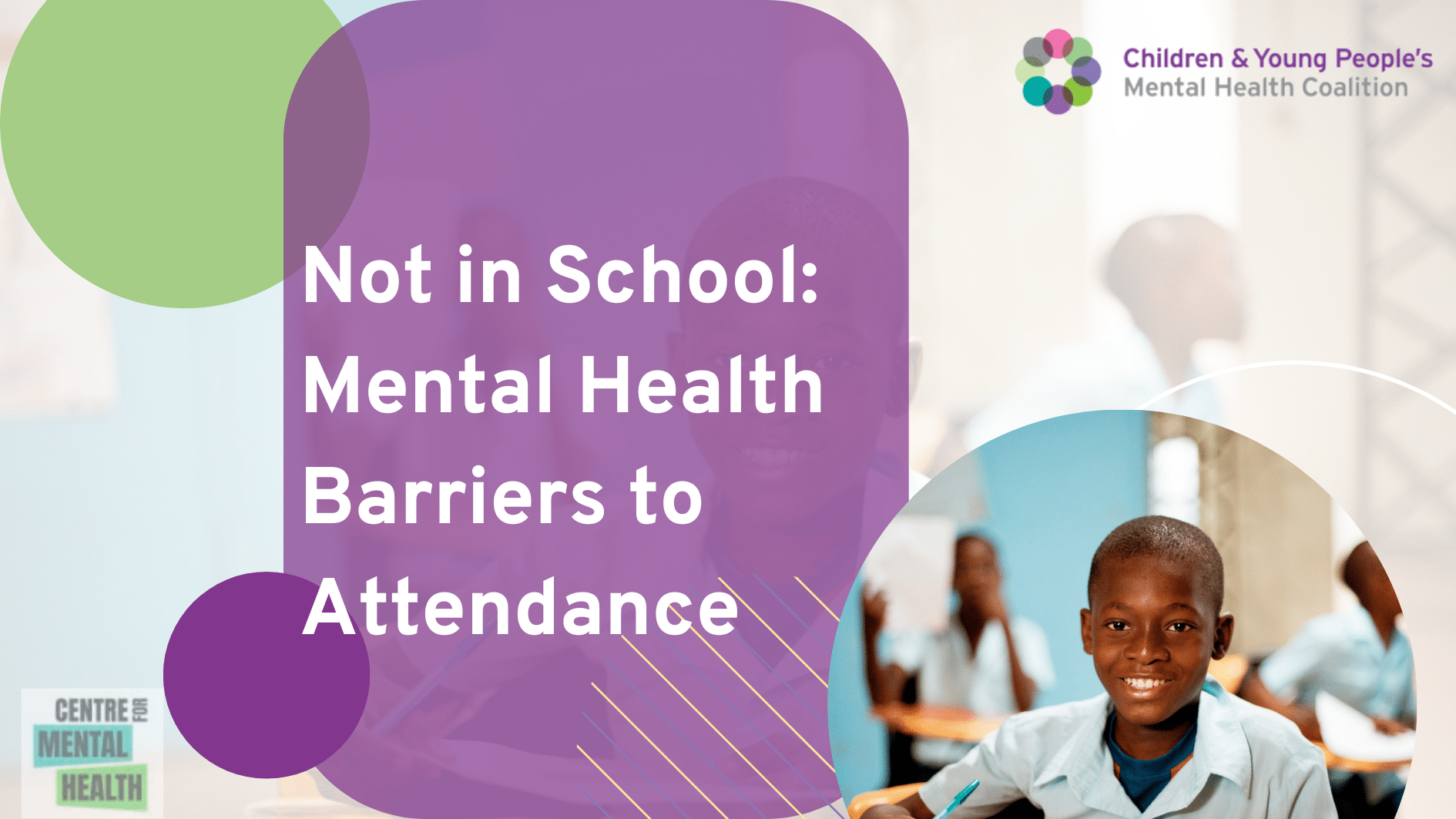Today, alongside Centre for Mental Health we published a report exploring the drivers of school absence and potential solutions to tackle the attendance crisis. We are grateful to Coalition members Square Peg for using their expertise to support this report.
Currently, one in five children are persistently absent from school, which means they are missing 10% or more of school time and in 2022-23, 150,000 children were severely absent. This means that they were missing over 50% of possible sessions.
We know that the school attendance debate has been a large part of the education space since the pandemic, but it is more nuanced than often perceived. Mental health has a huge impact on children and young people, with one in five children and young people aged 8 to 25 experiencing a mental health problem in 2023. Despite this, mental health is not always adequately considered in the attendance debate. That’s why we wanted to shed light on the links between attendance and mental health, and the wider barriers to school attendance.
The drivers of school absenteeism
We observed that school attendance and rising levels of mental health problems have risen in close relationship. The data suggests a link between school absence rates and mental health problems; in Autumn 2022, children with a mental health problem were seven times more likely to have missed 15 days of school than those without a mental health problem (NHS Digital, 2023).
Alongside rising levels of mental health problems, waiting times for support have been at an all-time high (Young Minds, 2023). Young people are finding it increasingly challenging to access the support that they require and as a result face barriers to school attendance due to unmet and unsupported need.
Whilst attendance is often perceived through a single lens, we found that there are a range of wider barriers to children and young people attending school that are often ignored. This includes barriers experienced by children with mental health problems, children with special educational needs and disabilities (SEND), those living in poverty, those experience bullying or racism, young carers and care experienced children. For example:
• Disabled pupils and those with special educational needs are disproportionately represented in both absence and persistent absence figures (Department for Education, 2020)
• Research by the Centre for Young Lives found that 57% of persistently absent pupils were eligible for free school meals, and children growing up in poverty were three times more likely to miss school (Centre for Young Lives, 2024)
• In a survey of 13,387 12-18 year olds, 18% of respondents said they had missed school because they were being bullied within the past 12 months (Ditch the Label, 2020)
It is important to note that that there are many other groups of children and young people, not listed here, who face barriers to school attendance.
What change do we want to see?
The Government has introduced a range of initiatives to tackle the attendance crisis, including attendance mentors and new attendance hubs. Whilst these have the potential to bring about change, their success will be limited by not addressing the wider determinants of school absenteeism. As a result of this they are likely to fall short in supporting children and young people to get back into school.
We believe we need a new approach to school absenteeism, one that addresses the barriers to children attending school and makes sure that children get the support they need both inside and outside the school gates. This should include:
- Introducing a mental health code of absence to record absence for pupils with mental health problems.
- Improving the availability of mental health support through embedding and resourcing a whole education approach and funding the full national roll out of mental health support teams.
- Addressing the drivers of school absenteeism by taking action to address the social determinants such as poverty, racism, and discrimination to support children and young people to attend school.
As always, we would love your support in getting this report far and wide. We have pulled together a social media pack with links to graphics you can use as well as suggested tweets and newsletter copies.
The government must hear our voices and better to support children and young people to not only attend but to thrive in school.
References
Centre for Young Lives (2024) An evidence-based plan for addressing poverty with and through education settings. Available from: https://www.n8research.org.uk/media/CoTNPovertyReport2.pdf [Accessed 22 March 2024]
Department for Education (2020) Pupil absence in schools in England: 2018 to 2019. Available from: https://www.gov.uk/government/statistics/pupil-absence-in-schools-in-england-2018-to-2019 [Accessed 1 February 2024]
Ditch the Label (2020) The annual bullying survey 2020. Available from: https://www.internetmatters.org/wp-content/uploads/2020/11/The-Annual-Bullying-Survey-2020.pdf [Accessed 18 March 2024]
NHS Digital (2023) Mental Health of Children and Young People in England, 2023 – wave 4 follow up to the 2017 survey. Available from: https://digital.nhs.uk/data-and-information/publications/statistical/mental-health-of-children-and-young-people-in-england/2023-wave-4-follow-up [Accessed 1 February 2024]
Young Minds (2023) Yearly referrals to young people’s mental health services have risen by 53% since 2019. Available from: https://www.youngminds.org.uk/about-us/media-centre/press-releases/yearly-referrals-to-young-people-s-mental-health-services-have-risen-by-53-since-2019/ [Accessed 1 February 2024]





